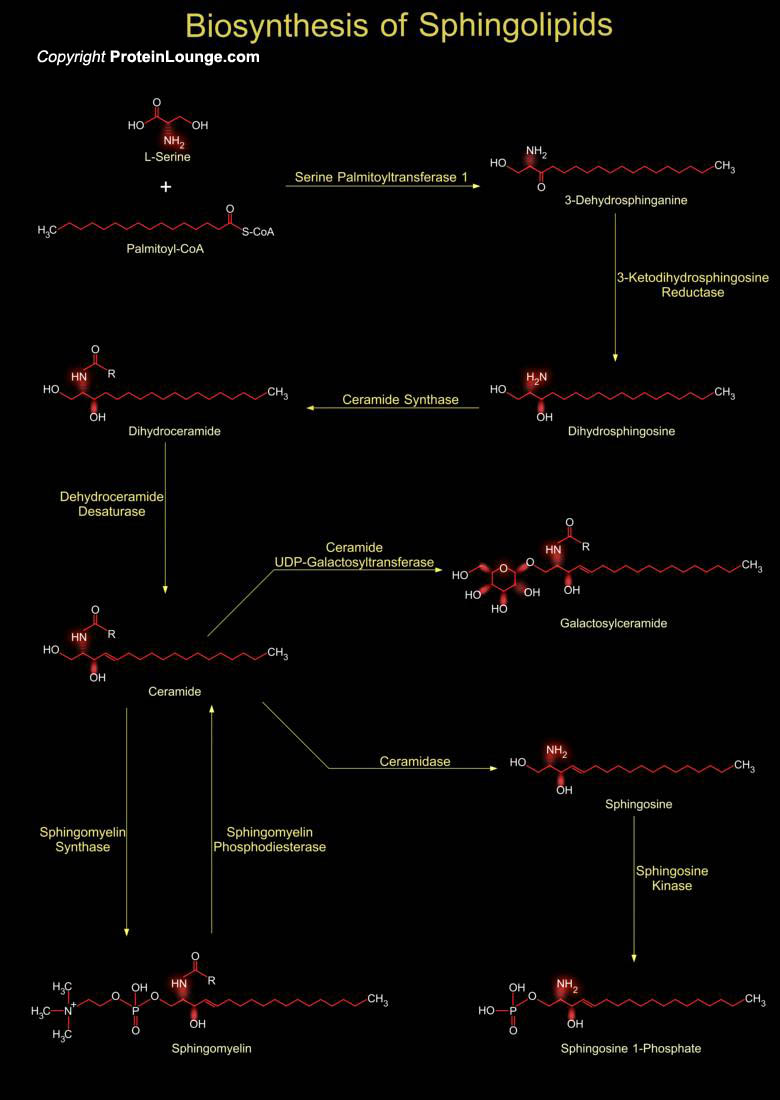
Sphingolipids structural components of the cell membrane play a key role in the regulation of several cellular processes. Cell signaling related to sphingolipids induces apoptosis, cell cycle arrest and cell growth. There are multiple bioactive sphingolipids metabolites which include ceramide, sphingosine-1-phosphate, sphingosine, and sphingomyelin which may act as secondary messengers in cellular signal transduction pathways. Sphingolipids are abundant components of the myelin sheath which protects and insulates cells of the central nervous system. Sphingolipids are also found in plant cells and yeast and are derivatives of the base sphingosine (phytosphingosine in plants). Sphingolipids are a class of lipids with two non-polar tails (sphingosine and fatty[..]
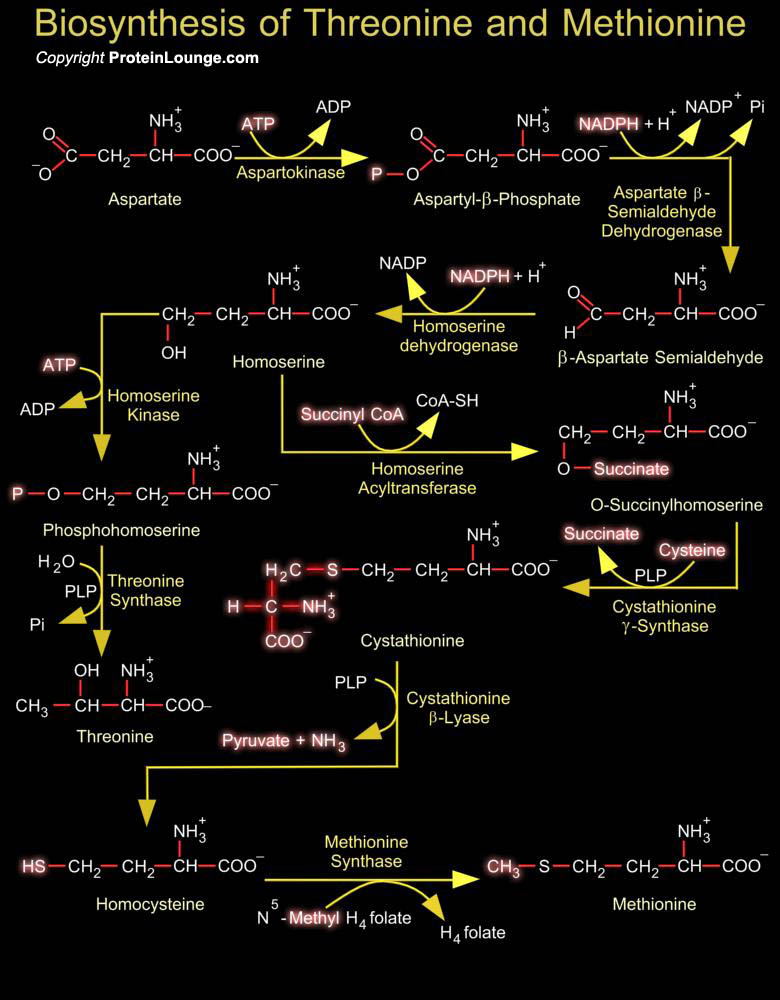
Threonine is an alcohol-containing amino acid that can not be produced by metabolism and must be taken in the diet. This amino acid plays an important role along with Glycine and Serine in Porphyrin metabolism. Threonine is incorporated into proteins and enzymes at a molar rate of 6 percent compared to the other amino acids. Methionine is the only sulfur-containing amino acid that is essential for mammals and must therefore be derived entirely from the diet. Methionine is an important amino acid that helps to initiate translation of mRNA (messenger RNA) by being the first amino acid incorporated into the N-terminal position of all proteins. This sulfur-containing amino acid is also the source of sulfur for Cysteine in animals and man. In that regard, Methionine is[..]
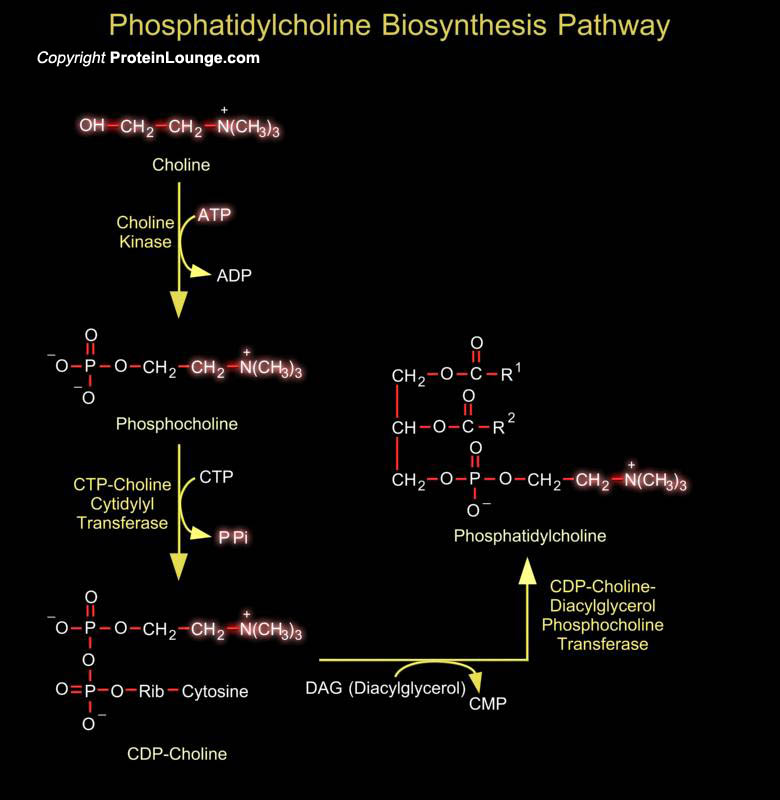
Phosphatidylcholine (once given the trivial name 'lecithin') is usually the most abundant phospholipid in animal and plants, often amounting to almost 50% of the total, and as such it is the key building block of membrane bilayers. In particular, it makes up a very high proportion of the outer leaflet of the plasma membrane. Phosphatidylcholine is also the principal phospholipid circulating in plasma, where it is an integral component of the lipoproteins, especially the HDL (High Density Lipoprotein). It is a neutral or zwitterionic phospholipid over a pH range from strongly acid to strongly alkaline (Ref.1). There are two mechanisms for the biosynthesis of phosphatidylcholine. Choline itself is not synthesized by animal cells, but is obtained[..]
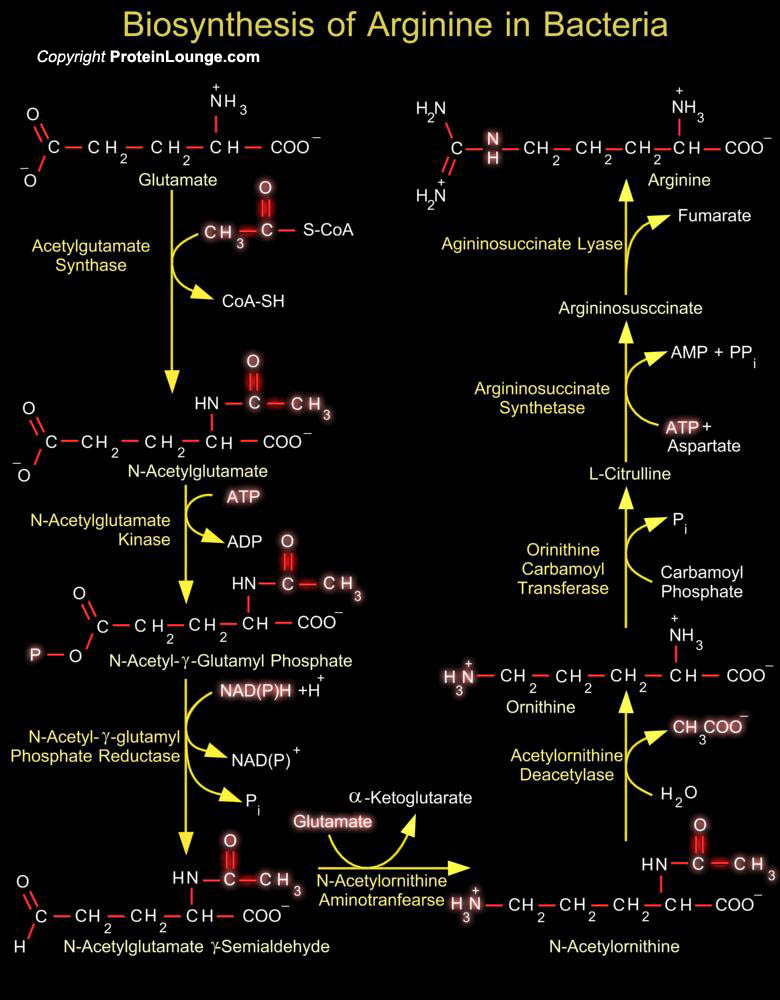
In bacteria, biosynthesis of arginine proceeds from glutamate in eight enzymatic steps initiated by the acetylation of glutamate by N-Acetyl Glutamate Synthetase. The N-Acetylated intermediates lead to ornithine. The synthesis of ornithine, like that of proline, involves the activation and reduction of the 5-carboxyl group of glutamate. In prokaryotes the pathway of arginine biosynthesis follows two alternative patterns which differ by the strategies used for the removal of the acetyl group and for the control of the metabolite flow along the pathway. Enterobacteriaceae and Bacillaceae use a linear pathway in which the formation of ornithine from N-Acetylornithine is mediated by the hydrolytic enzyme N-acetylornithinase (Ref.1). In these organisms, acetyl glutamate[..]
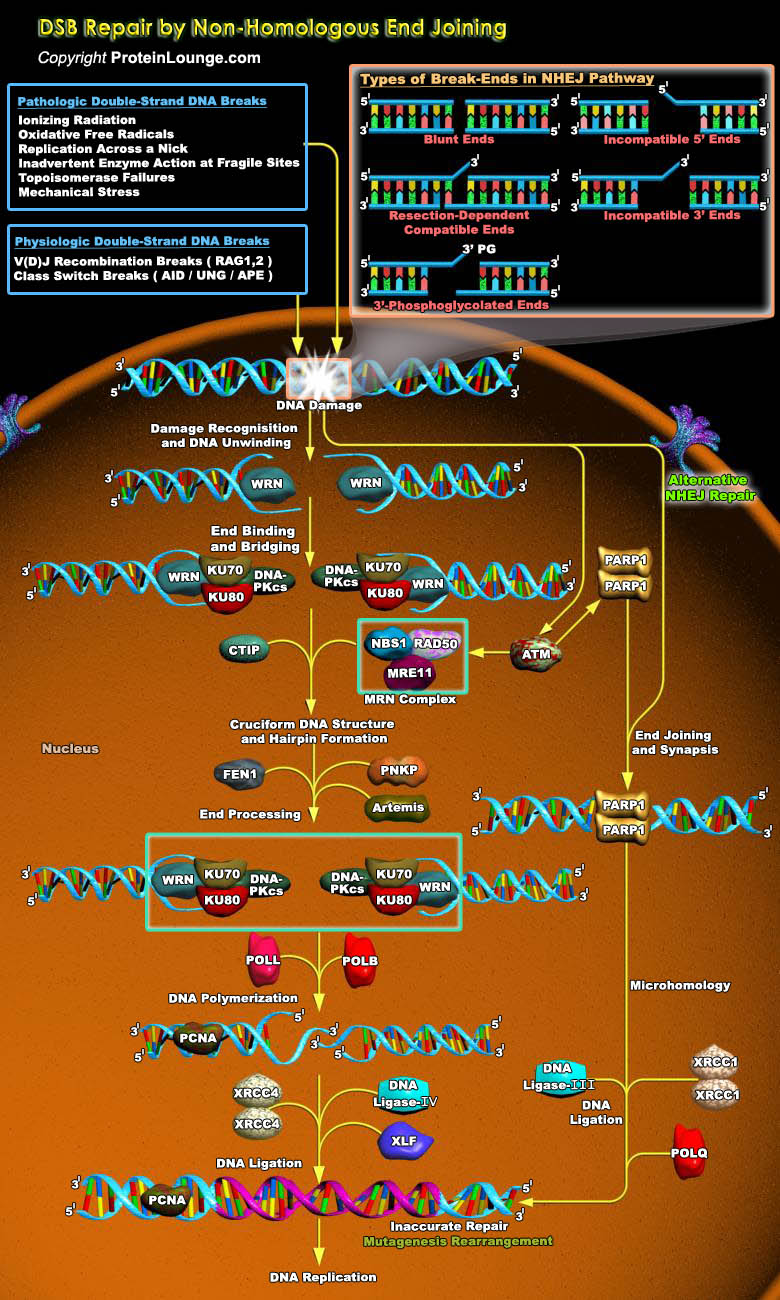
DNA double-strand breaks (DSBs) are serious lesions that threaten a loss of chromosomal content. Repair of DSBs is particularly challenging because, unlike all other lesions, the DNA substrate is inherently bimolecular. Bringing two DNA molecules together is also dangerous because local mutations and chromosome rearrangements can arise if ends are inappropriately coupled. The cell has two general strategies for repairing DSBs i.e. HR (Homologous recombination) and NHEJ (Non-homologous end joining). HR is a mechanism in which an intact homologous donor duplex is used to guide DNA synthesis across the DSB gap whereas NHEJ is defined as repair in which two DSB ends are joined by direct ligation. The resulting joints are characterized by little (less than ~10 bp) or no[..]
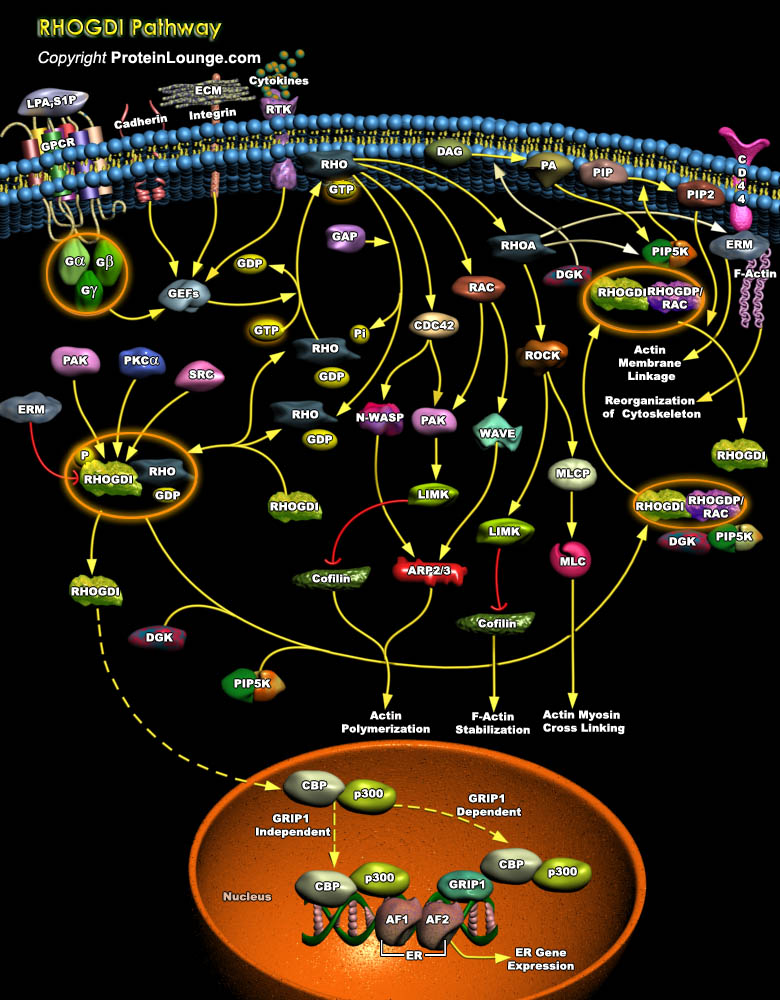
The Rho family of small GTPase proteins comprises CDC42 (Cell Division Cycle-42), Rac, and Rho. Proteins of the Rho/Rac subfamily (Rho proteins) of small GTP-binding proteins function as molecular switches that regulate a multitude of biological processes including cell proliferation, apoptosis, differentiation, migration, cytoskeletal reorganization, and membrane trafficking. Like most of the Ras-related proteins, Rho GTPases cycle between an inactive GDP-bound conformation and an active GTP- bound conformation. Cycling between the two conformations enables these proteins to act as binary switches (Ref.1). The tightly regulated GTP-binding/GTPase cycle requires the coordinated action of three regulatory proteins: 1) GEFs (Guanine Nucleotide Exchange Factors), which[..]
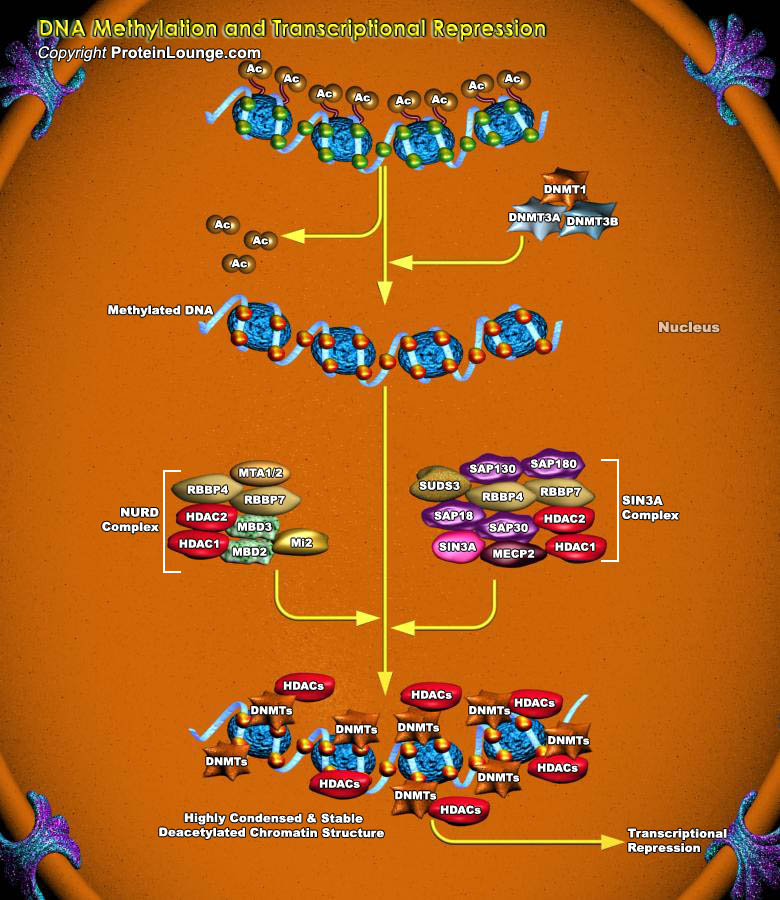
DNA methylation is one of the best characterized epigenetic modifications. In mammals it is involved in various biological processes including the silencing of transposable elements, regulation of gene expression, genomic imprinting, and X-chromosome inactivation.DNA methylation of gene promoter regions is associated with transcription repression.Transcriptional repression is an essential mechanism in the precise control of gene expression. Transcriptional repressor proteins associate with their target genes either directly through a DNA-binding domain or indirectly by interacting with other DNA-bound proteins. To inhibit transcription in a selective manner, a repressor protein can mask a transcriptional activation domain, block interaction of an activator with other[..]
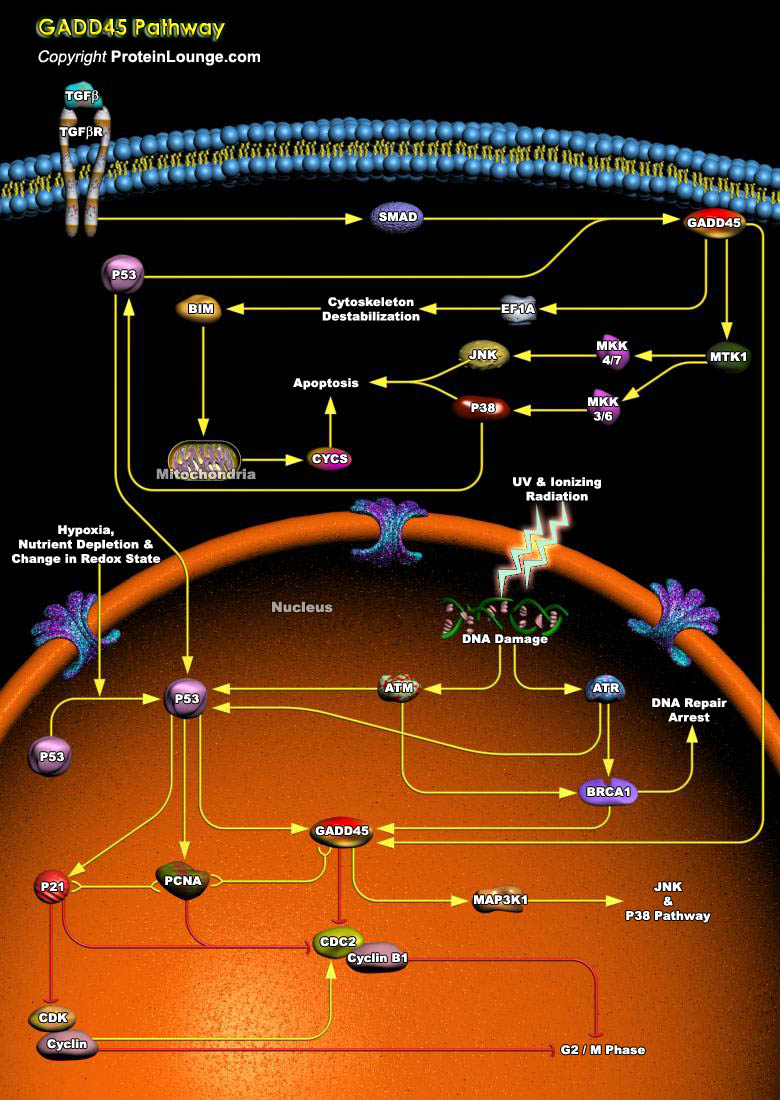
Genotoxic stress is an important and ubiquitous type of stress that cells are inevitably exposed to over the life span of an organism. Many potentially damaging agents both from the environment and from endogenous processes involving activated oxygen species and other reactive agents can damage the DNA in cells (Ref.1). GADD45 induction by BRCA1 leads to programmed cell death through the JNK pathway via interaction with the upstream kinase MTK1/MEKK4. JNK has been shown to be involved in the induction of apoptosis after genotoxic stress and UV radiation. However, JNK and p38 may exert antagonistic effects depending on cell context, cross-talk with other signaling pathways and intensity and duration of the stimulus. Originally, JNK activation and inhibition experiments[..]
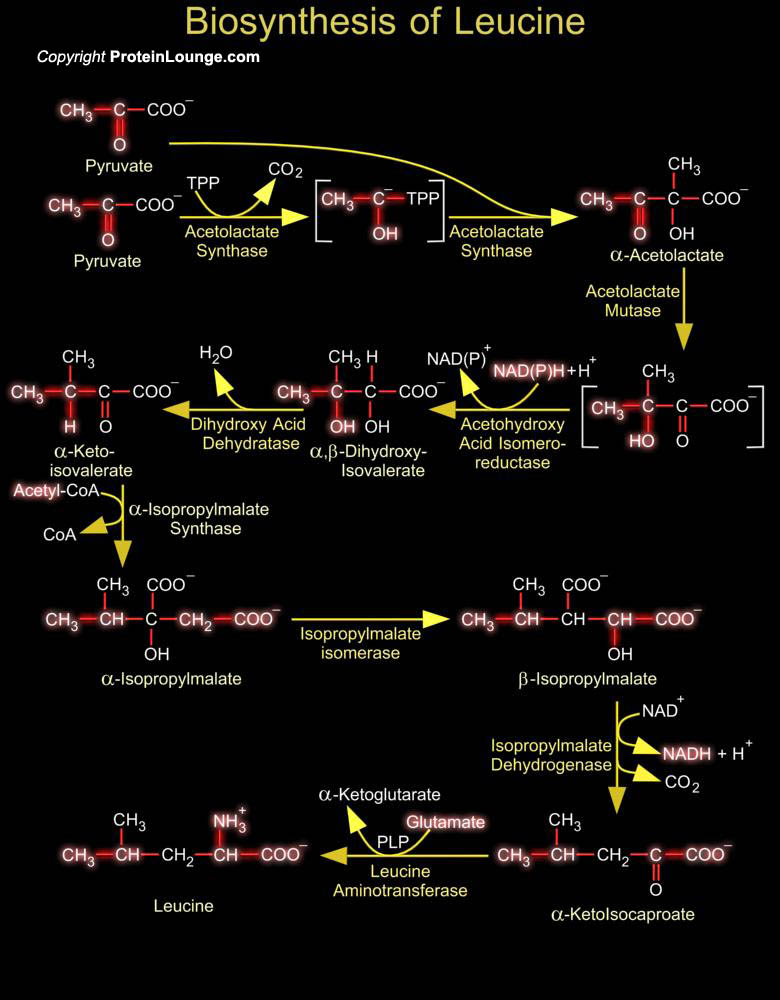
Isoleucine is essential amino acid, only synthesized in plants and bacteria, and required in the diet by animals. In proteins, the hydrophobic Isoleucine side-chain tends to reside with other hydrophobic residues in the interior of globular proteins or in transmembrane domains. Isoleucine biosynthesis begins with the common metabolic intermediate Pyruvate, the endpoint of glycolysis. The first step in Isoleucine biosynthesis requires TPP (Thiamine Pyrophosphate) to form a carbanion intermediate. This intermediate undergoes decarboxylation to produce a stabilized anion of Hydroxyethyl-TPP (HET-PP), which acts as a nucleophile on the Alpha-keto group of a second molecule of Pyruvate or Alpha-ketobutyrate, releasing TPP and Acetolactate or Acetohydroxybutyrate. Another[..]
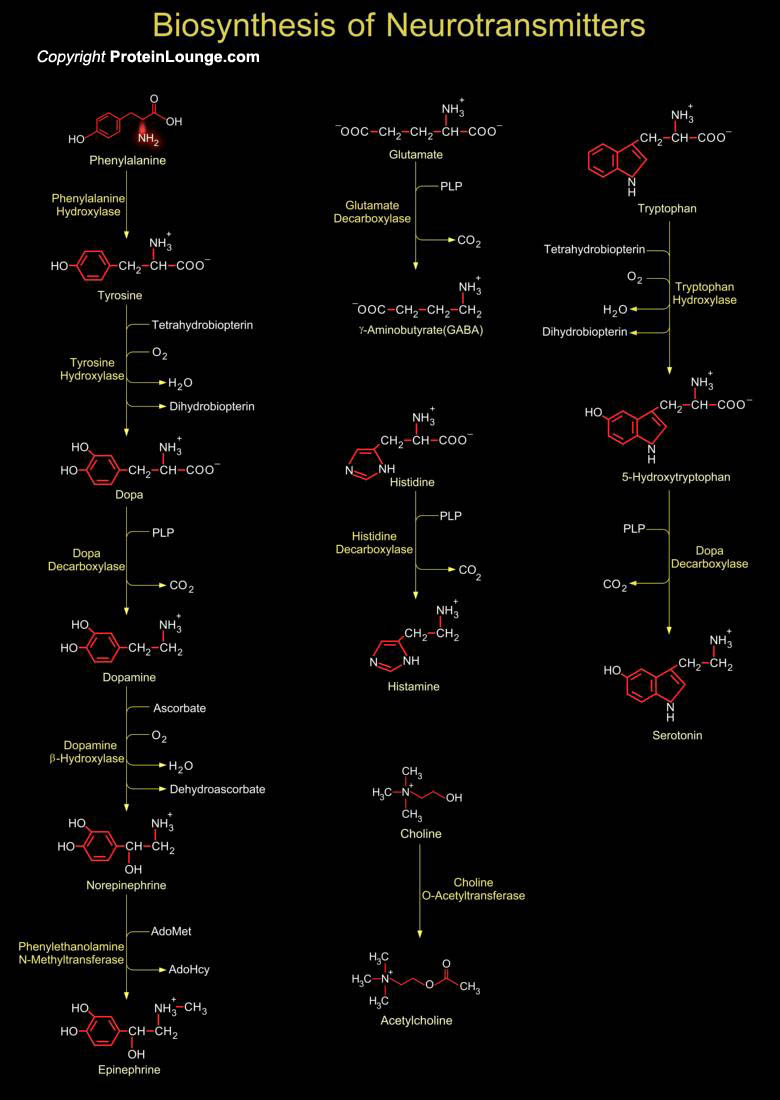
For neuronal signal transduction, the presynaptic cell synthesizes neurotransmitters that then traverse the synaptic cleft. Neurotransmitters are signaling molecules used by neurons to communicate across chemical synapses. The receptors for neurotransmitters include GPCRs (G-Protein Coupled Receptors) and ligand-gated ion channels. The biogenic amines are neurotransmitters derived from amino acids, and include Dopamine, Epinephrine, GABA, Histamine and Serotonin. For each of these, decarboxylation of an amino acid is a key step. Amino acid decarboxylases are PLP-Schiff base with the substrate so as to stabilize the C-alpha carbanion formed upon C-alpha-COO- bond cleavage. Formation of GABA and Histamine are one step processes. GABA (Gamma-aminobutyric acid) is[..]
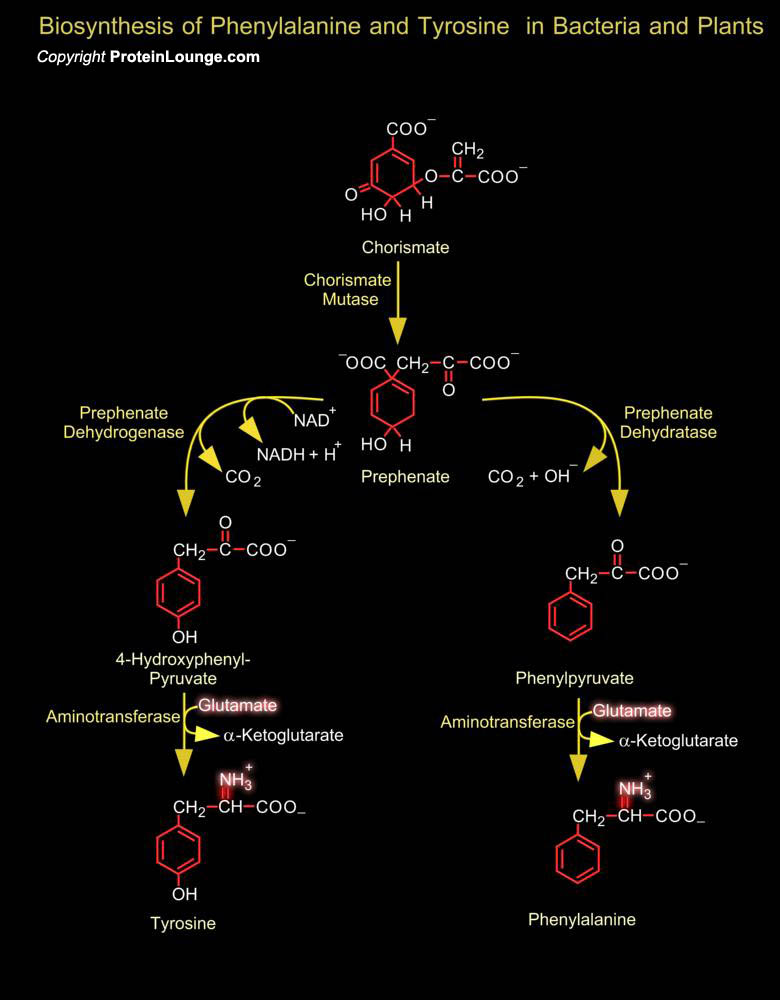
Chorismate is a branch point for different pathways leading to Phenylalanine and Tyrosine. A mutase reaction yields Prephenate, which undergoes either a DehydrataseDecarboxylase or a reductionDecarboxylase reaction (in some bacteria) resulting in aromatization, the oxo analogues of phenylalanine and tyrosine obtained in this way are then converted into the respective amino acids by transamination. In chloroplasts of higher plants, Prephenate is first transaminated to Arogenate, while the DehydrataseDecarboxylase reactions take place afterwards. Mammals obtain tyrosine from Phenylalanine by a hydroxylation reaction catalyzed by phenylalanine 4-monooxygenase, which uses Tetrahydrobioperin as a hydrogen donor. The reduced Tetrahydrobioperin is regenerated by NAD (P)H,[..]
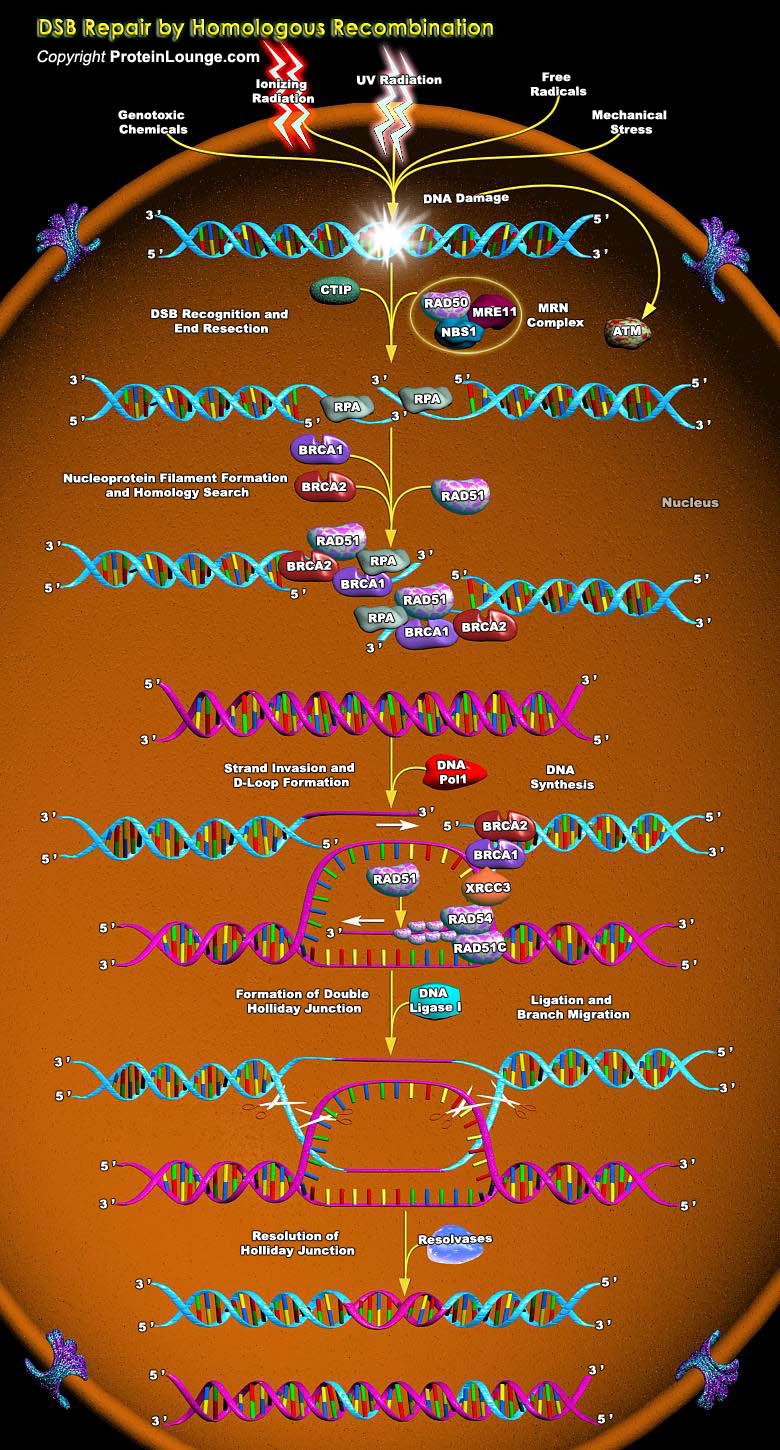
Cellular DNA is constantly exposed to the effects of endogenous or environmental agents such as free radicals, radiation and chemicals. In higher organisms, these nucleic alterations are estimated at several thousands of lesions per cell which can correspond to the loss of bases and also to the breaking of one or both strands of the DNA double helix. Among these DNA breaks, the DSB(double-strand break) is the most harmful because it is the most difficult to repair. DSBs are the most genotoxic DNA lesions.Unrepaired DSBs can lead to cell death, whereas misrepaired DSBs increase the likelihood of chromosome rearrangement, mutagenesis and loss of crucial genetic information. In replicating cells, such instability can result in apoptosis or cellular transformation. In[..]

